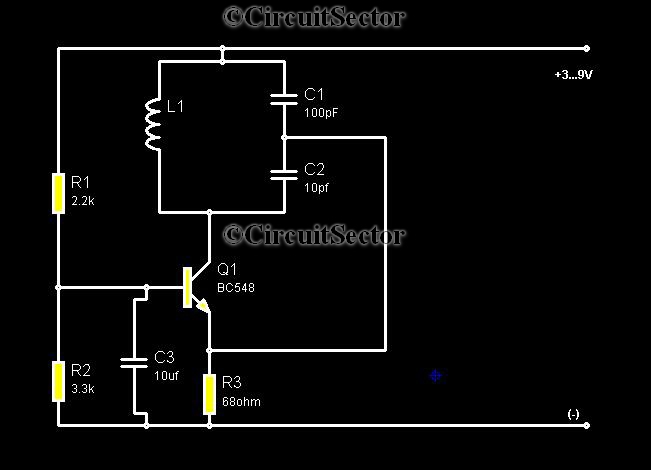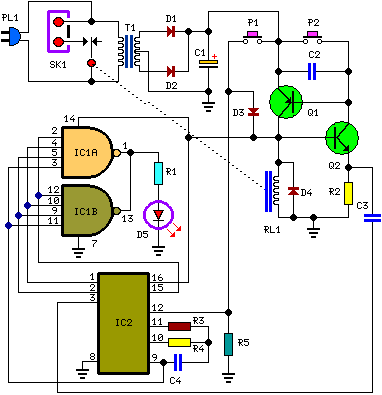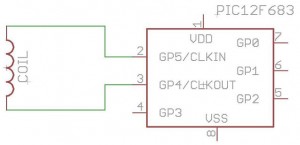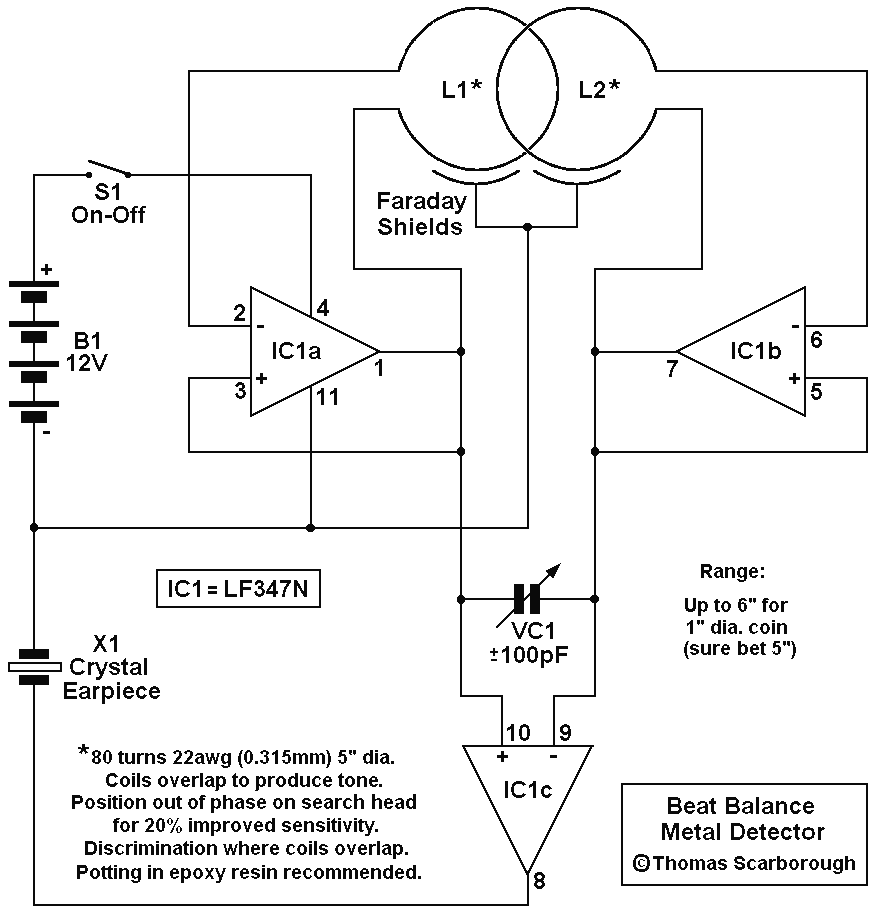
Low Cost Metal Detector Circuit PCB

Metal detectors are typically complex devices that often incorporate expensive components, making DIY metal detector circuits uncommon. However, this metal detector hobby circuit can be built using only a few components, such as a BC548 transistor and a standard AM radio. The schematic for this metal detector operates in accordance with the frequency of any tuned AM radio. Upon powering the circuit, the radio will initially remain silent because the oscillation from the radio and the metal detector's oscillator will be in sync, causing them to cancel each other out. It is essential to adjust the frequency of the metal detector circuit to match the tuned frequency of the radio. When a metal object comes near the circuit, the cancellation of the two signals ceases, resulting in the radio producing sound.
The metal detector circuit utilizes a BC548 transistor, which serves as the primary active component. This transistor is configured in a common-emitter arrangement, allowing it to amplify the signal generated by the oscillator. The circuit also includes a few passive components, such as resistors and capacitors, which are crucial for setting the oscillation frequency. The AM radio acts as a receiver for the oscillation signal, which is modulated by the presence of metal objects.
When constructing this circuit, the first step involves connecting the BC548 transistor in a way that it can generate oscillations. The base of the transistor is connected to a resistor that sets the biasing point, ensuring the transistor operates in the active region. The collector is linked to a tuned circuit, which consists of an inductor and a capacitor, forming a resonant circuit that determines the oscillation frequency.
The output from the collector is fed into the AM radio's input. Initially, when the circuit is powered, both the radio and the metal detector oscillator produce signals at the same frequency, leading to destructive interference and silence in the radio. To ensure proper operation, the frequency of the metal detector's oscillator must be fine-tuned to match the AM radio's tuned frequency.
When a metal object enters the detection zone, it alters the oscillation conditions of the circuit, disrupting the cancellation effect. This results in a change in the output signal, which the AM radio can detect, leading to the production of sound. The sensitivity of the metal detector can be adjusted by modifying the values of the passive components, allowing for detection of various types of metal objects at different distances.
This simple yet effective design demonstrates how basic electronic components can be utilized to create a functional metal detector, making it an excellent project for hobbyists and those interested in electronics.Metal detectors are usually very complicated and it may be consist of very costly components and metal detector DIY circuits are rare. However this metal detector hobby circuit can be constructed by only a few components such as BC548 and an ordinary AM radio that we usually use.
This metal detector schematic shown in the figure oscillates accordi ng to the frequency of any tuned AM radio. When the circuit powers up, the radio will not produce any sound because the radio oscillatory and the the metal detector oscillator will be in the same frequency and each will cancel itself. We all need to adjust the frequency of electronics circuit of metal detector to the tuned radio frequency.
Whenever a metal part come aside the circuit, the cancellation of two signals stops and the radio starts producing sound. 🔗 External reference
The metal detector circuit utilizes a BC548 transistor, which serves as the primary active component. This transistor is configured in a common-emitter arrangement, allowing it to amplify the signal generated by the oscillator. The circuit also includes a few passive components, such as resistors and capacitors, which are crucial for setting the oscillation frequency. The AM radio acts as a receiver for the oscillation signal, which is modulated by the presence of metal objects.
When constructing this circuit, the first step involves connecting the BC548 transistor in a way that it can generate oscillations. The base of the transistor is connected to a resistor that sets the biasing point, ensuring the transistor operates in the active region. The collector is linked to a tuned circuit, which consists of an inductor and a capacitor, forming a resonant circuit that determines the oscillation frequency.
The output from the collector is fed into the AM radio's input. Initially, when the circuit is powered, both the radio and the metal detector oscillator produce signals at the same frequency, leading to destructive interference and silence in the radio. To ensure proper operation, the frequency of the metal detector's oscillator must be fine-tuned to match the AM radio's tuned frequency.
When a metal object enters the detection zone, it alters the oscillation conditions of the circuit, disrupting the cancellation effect. This results in a change in the output signal, which the AM radio can detect, leading to the production of sound. The sensitivity of the metal detector can be adjusted by modifying the values of the passive components, allowing for detection of various types of metal objects at different distances.
This simple yet effective design demonstrates how basic electronic components can be utilized to create a functional metal detector, making it an excellent project for hobbyists and those interested in electronics.Metal detectors are usually very complicated and it may be consist of very costly components and metal detector DIY circuits are rare. However this metal detector hobby circuit can be constructed by only a few components such as BC548 and an ordinary AM radio that we usually use.
This metal detector schematic shown in the figure oscillates accordi ng to the frequency of any tuned AM radio. When the circuit powers up, the radio will not produce any sound because the radio oscillatory and the the metal detector oscillator will be in the same frequency and each will cancel itself. We all need to adjust the frequency of electronics circuit of metal detector to the tuned radio frequency.
Whenever a metal part come aside the circuit, the cancellation of two signals stops and the radio starts producing sound. 🔗 External reference





